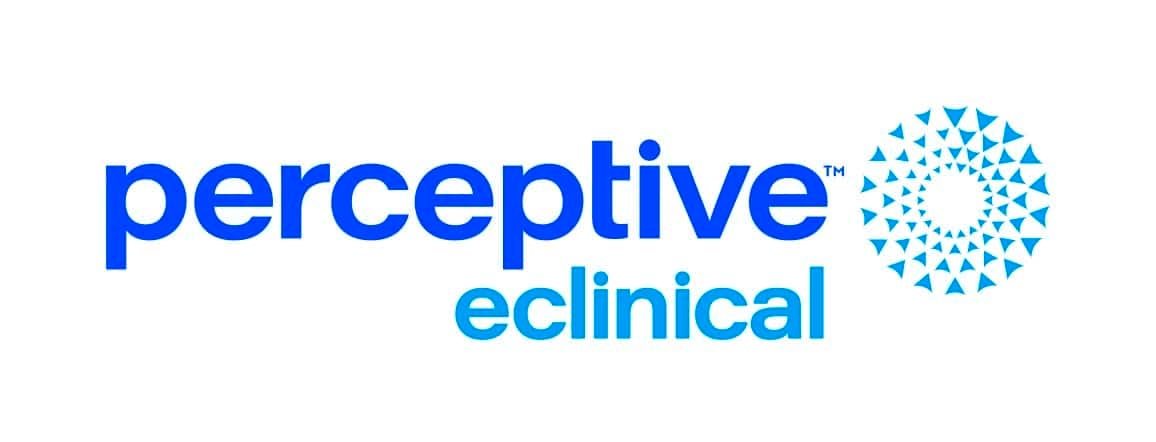
Meticulous planning is central to building an effective clinical trial, powered by well-designed Interactive Response Technology (IRT) which provides not only the expected randomization and trial supply management (RTSM) but additional study management solutions. However, an element of the unknown is often unavoidable. In no field is this unpredictability more inherent than oncology – where aspects such as participant visit schedules, treatment sourcing, and cohort doses may only be understood as the trial progresses.
Oncology trials also continue to be less tightly defined upfront, with more flexibility for the trial to adapt as it continues. We caught up with experts from Perceptive eClinical – a company with experience in 637 oncology studies – to understand how all these challenges impact the very system designed to keep trials running smoothly.
Oncology protocols: Key considerations in trial management
From randomization and blinding to drug supply and study management, oncology protocols have a range of unique elements arising from the complex, progressive nature of oncological diseases. An experienced IRT partner will know the unique features to look for in the protocol and how to mitigate their risks while also addressing the supply and operational challenges that study teams face. For example, while other trials may have a defined 12-week treatment period, an oncology study can require regular monthly visits until disease progression, involving multiple investigative medicinal product (IMP) batch changeovers. An excess of visits is typically scheduled in the hope that the participant’s condition improves. Yet there are circumstances where this may need to be extended further.
“Extending a visit schedule is something that is very critical to oncology trials, and we’ve been developing tools to ensure that flexibility is there,” says Malcolm Morrissey, Associate Director of Statistics and Product Support Services from Perceptive. He leads a global team of RTSM experts who provide expertise in medication management for shipping and dispensing. He also consults in participant randomization methodology, including bespoke designs and rare methods.
“Beyond that, thinking about the nature of the medication itself, there can be issues with toxicity if the IMP is administered too frequently,” Morrissey adds. “If it’s helpful for the study team, we can control time gaps in the IRT, ensuring that the medication cannot be dispensed more frequently than 28 days apart, for example.”
This date check can be designed as a soft stop, as the date of dispensation on the system may not necessarily reflect the date of administration.
These measures can help to lower the serious health risks, where the participant must pause their treatment and receive rescue medication. While such rescue patterns have typically been managed outside IRT, advanced options for pausing and restarting treatment with allocation of rescue medication have been supported within Perceptive’s system.
The advantage of adaptive trials in oncology
Meanwhile, the rise of adaptive trials to accelerate oncology research is prompting IRT vendors to up their game. In adaptive trials, a predefined set of protocol changes are possible throughout specific points in the trial. Since these changes are first approved by the data review board, the IRT vendor must be ready to share data in a timely fashion. If the decision is approved to drop a treatment arm, alter a randomization ratio, or lower a recruitment target, the onus is on the IRT to enable those changes to happen seamlessly and, in some cases, in a blinded way.
Since any delays associated with data access and transfers or the time needed to reprogram the system could defeat the purpose of the adaptive protocol, the vendor should be prepared and have these options built in from the start. During the initial build, Perceptive eClinical creates “validated switches” that automatically implement a new randomization design and its many knock-on effects, including the required change in site resupply strategies and dispensation medication checks if a treatment arm is dropped, for example.
“The system will automatically update all of that behind-the-scenes so you can randomise your participant straight away. It’s that seamless approach of having the options pre-validated that our sponsors find very helpful,” Morrissey notes.
As the space evolves, some oncology sponsors have taken adaptive trials one step further. In platform trials, for example, multiple intervention groups across various therapeutic areas or participant populations are compared against a single control group. This involves a master protocol, which then allows for subprotocols to be quickly submitted and implemented in the IRT design. While the IRT partner will be aware of the potential subprotocols, nothing is guaranteed, and the vendor’s flexibility is thoroughly tested.
The need for flexibility in oncology trials
Although there are many critical details to be gleaned from an oncology protocol, there are many more IRT/RTSM design considerations where the information may not be available. Treatment plans are one example.
Ramachandrudu Vadrevu, Senior Project Manager at Perceptive, explains: “In oncology trials, especially Early Phase, the biggest challenge is clients changing the dose of the subjects frequently based on the safety review board decisions. For example, a study may have an initial dose range defined in the protocol, plus the option to add a new as yet undefined dose,” he notes. “It means we need to be more adaptive with the flexibility that we offer.”
But on top of this much-needed flexibility, Peter Tarbox, Statistical Design and Trial Supply Consultant from Perceptive, argues that it’s equally critical for the IRT team to draw on its oncology expertise to ask the right questions. A key example of this pertains to packaging plans.
“The more that is known upfront, the more can be pre-prepared during the initial build,” he says. “For instance, even if the exact details of future study parts or phases are not known, can we prepare a packaging list for the kit types that may be used.”
Discussing substitution options can also be important at this stage. “It is not uncommon to see multiple kit types covering the same treatment within a treatment arm to allow for titration or to support efficient allocation when dispensing for weight-based dosing,” Tarbox explains. “For example, a 1000mg dose could be made up using 1 x 1000mg or 2 x 500mg or even 1 x 500 plus 2 x 250mg kits. This substitution may need to be considered at either or both the depot and participant dispensing level. The more complex the substitution, the more helpful an IRT can be in ensuring the desired usage. But this adds to the complexity of the build and can restrict the flexibility of what a user can do. We look to discuss what the balance of concerns are in each study.”
Meanwhile, Standard of Care treatment sourcing – an important ethical cornerstone of oncology trials – is another logistical consideration the IRT team may raise. Will all sites source the comparators locally, or will some need help via central sourcing? Providing the ability to switch sourcing at medication type and site levels allows for the flexibility to quickly align with a new supply chain. With the combination of inventory management factors in oncology trials, including sourcing differences, combination therapies, and multiple study phases, an IRT designed to automatically adapt such supply schemes both minimises wastage and supports reducing the workload of the clinical supplies manager.
Supporting next-generation oncology trials
Oncology trials are only growing in complexity. With increasing use of adaptive elements, IRT companies must balance the need for a quick study startup against the time taken to program in ‘options’ that permit flexibility when handling planned and unplanned changes.
As precision or personalised medicine has come to the fore of cancer research, participant-specific supply chains are continuing to push the envelope of IRT. Finally, the number of technology systems that the IRT must integrate with is continuing to grow. “The requirements are dynamically changing,” states Vadrevu.
All of this requires expert support. Perceptive’s project managers communicate with clients on a weekly or bi-weekly basis to understand and plan ahead for the changing status of the trial. In oncology, Vadrevu explains that system updates and protocol amendments are common due to the trials’ lengthy nature. This emphasises the importance of front-end functionality for modifying configurations without reprogramming – something which Perceptive eClinical IRT supports. Self-service for common and study-specific changes is important, in addition to 24/7 Customer Support for approved data changes and corrections.
“In our trials, we always have a range of changes that users can make themselves,” Vadrevu explains. “If there is an unexpected protocol amendment, the IRT Project Manager will engage RTSM SMEs to ensure proper risk management and the right advice is provided. If we need to make an update in the system, we first look at how this will impact the existing system and participants. We always need to be proactive in understanding the dynamics of the study and what else may be coming in the future.”
“The communication with sponsors really is ongoing,” agrees Morrissey. “It’s not just there for the build; it’s a partnership throughout. We’ve been doing this for 30 years at Perceptive eClinical, and our SOPs are effectively very mature processes that have been refined over many years.”
Perceptive eClinical has supported 340 oncology trials in the last five years alone. To learn how eClinical technology is adapting to the challenges of precision medicine, please download the whitepaper below.



